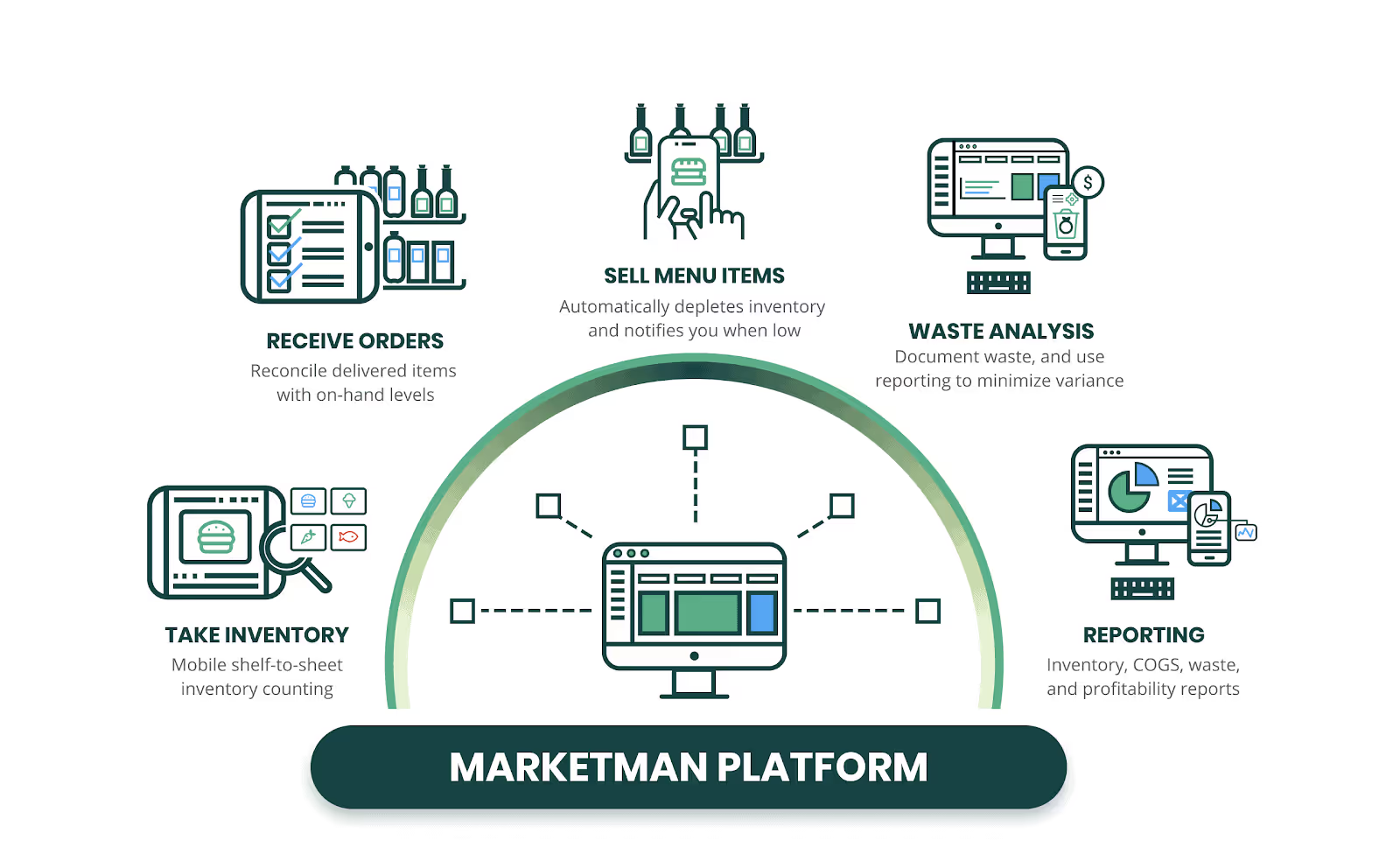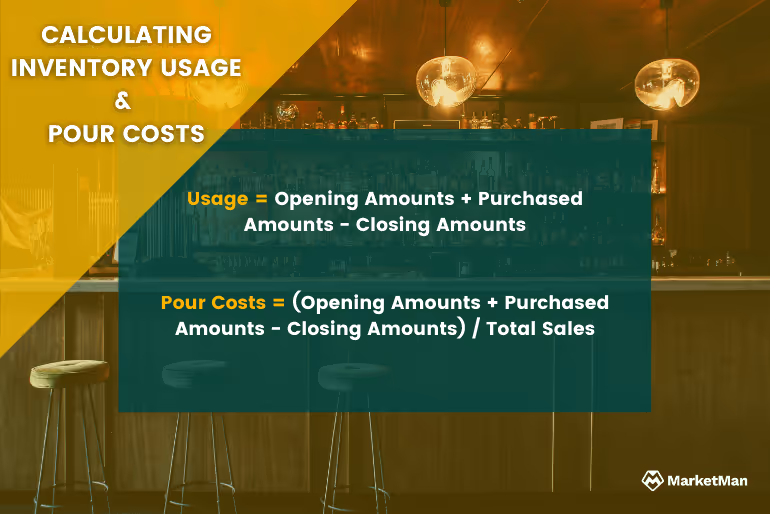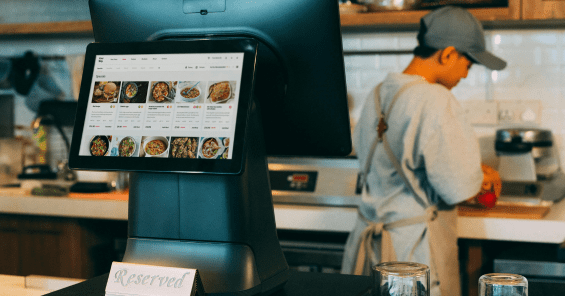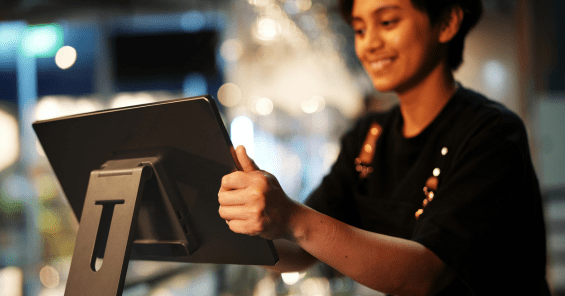

The Ultimate Guide to Managing Your Bar’s Inventory
Tracking your bar’s inventory is a tedious process, whether you’re just opening your doors or you’ve been at it for years. We put together a guide on everything you need to know about managing your bar’s inventory, from keg scales to software solutions.
Bars and nightclubs represent a $24 billion industry, full of spirits, stories, and characters your favorite show couldn’t concoct. Running a bar, whether it’s a lowkey dive in the suburbs or the next hottest thing in SoHo, can be an extremely rewarding business venture, but it’s not as easy as pouring liquor from the well. One of the most important aspects of running a bar is managing your inventory. This can be mind-numbingly tough, since the volume of drink orders (and we mean that both ways) can change so fluidly. This guide will walk you through everything you need to know about tracking your inventory to the last drop, including: 1. Tracking your bar inventory 2. Calculating Inventory usage, pour costs, and more 3. Choosing a bar management software.
Let’s get started.
The Ultimate Guide to Restaurant Success: Optimizing Operations, Maximizing Profits, and Building a Loyal Customer Base
🔓 Unlock the secrets to restaurant success with actionable strategies for optimizing operations, maximizing profits, and building a loyal customer base.

Tracking your bar inventory
So you’ve opened a new bar and acquired your Business License and your Liquor License. You’ve got a place, a rental agreement, and you’re getting ready to open the doors. You’ve named it McSally’s Pub: you’ve got the stools, the dart board, the TVs that only play Premier League no matter the hour, the whole nine yards. Now that it’s time to tap the keg, there are some ducks you need to get in a row. To be as efficient as possible, you need to have a handle on your inventory at all times. Tracking inventory will allow you to identify sales trends, eliminate waste, and optimize your menu. Although tracking inventory at a bar is a little different than tracking inventory in a restaurant, the principles are largely the same.
What is bar inventory?
Bar inventory, much like restaurant inventory, is an account of all your supplies, ingredients, and miscellaneous inputs necessary for producing items on your menu. At McSally’s Pub, that includes beer bottles, kegs, liquor bottles, mixers, aromatics, liqueurs, and so on. It also includes the materials needed for its limited bar food menu, from the crinkle cut french fries to the decorative lettuce on the fish and chips. There are two types of inventory, the perpetual inventory and the physical inventory. Perpetual inventory is updated in real-time to reflect all inflows and outflows of inventory, based on sales, purchases from suppliers, and waste. Physical inventory is a static, one-time count of everything you have to sell. 

Note: your bar inventory should track things that are considered inputs, like ingredients in a restaurant. This does not necessarily include equipment, like jiggers, beakers, or shakers, as those are not typically reordered or replaced on a consistent basis.
How do you track bar inventory?
Tracking your bar inventory is an ongoing process, and it begins with a simple count, that is, your physical inventory. This information is necessary for a variety of business functions, like your break-even analyses and menu price setting. To conduct an inventory, you need to count every ingredient, input, or supply, and their amounts and record it. A good rule of thumb is to count twice, so you have some certainty as to what you have. At a bar, measuring amounts is crucial in ensuring efficiency, especially with liquor. But you don’t need to be scientifically precise to do your count, you only need as much information as is useful to you. Let’s break down counting by some common items:
Beer/Seltzer/Malt Liquor bottles
Drinks sold by the bottle are individual use and individually sold. Count these by the bottle and record them.
Liquor and Wine bottles
To keep track of anything that you pour from, from the well whiskey to the high end gin, follow a two-step process:
1. Count the bottles by type, quantity, and volume
Seems obvious enough, but count all the bottles. Organize them by type and then by volume. So you should have a list of 500mL whiskey, 1L whiskey, and so on.
2. Assess the relative amount in each bottle
This is the tricky part. Although you don’t need to break out the measuring cups, it’s good to have some uniformity in your measurement. A common way to do this is to line up all bottles arranged by size and type, imagine each divided into ten, and eyeball how much is left in each. For example, your bartender Liam performs the count at the end of the week. He counts three 500mL bottles of whiskey. One is unopened, one has about 5/10 left, the other has about 1/10.
Kegs, barrels, and opaque containers
For any container of liquid through which you cannot see, you’ll need a different approach than the rule of tenths. If you’re into a bit of lifting, you can try the guesstimate method, in which you pick up the keg, give it a shake, and make your best judgment call. Some will take a thermometer to measure the temperature differential of the empty space and the beer. Others will just use a keg scale. If you’re not into lifting, you can use something like a Keg Check for a little more accuracy. McSally’s Pub keeps a keg scale in the back to make sure they have enough Guinness on tap at all times.
Food ingredients
Use the same techniques you would for a restaurant. Count each ingredient, the amounts remaining, and so on.
What’s the frequency, Kenneth?
Taking inventory, especially physical inventory, is not a one-time deal. Typically, most bars will perform monthly physical inventory checks, with weekly updates for purchases, and the occasional spot check as well. There are a few dimensions to consider, namely: opening amounts, closing amounts, purchased amounts, and par levels.
Opening amounts
At the start of each month, you should conduct a physical count to gather your opening amount. The opening amount will be used to compare to your closing amount, which we’ll get to in a second. So for the month of January, McSally’s Pub would calculate their opening on the 1st.
Closing amounts
At the end of the month, perform another inventory check and record your results for comparison to the opening period. Using this information, you can calculate things like usage rates, food and liquor waste, sales trends, menu prices, and more.
Purchased amounts
Most bars will order inventory throughout the month to account for different factors and scenarios, like a big game, a holiday, or an epidemic of divorces. New purchases will reflect on your closing amount, but they don’t play as large a role in your calculations. Record new purchases throughout the month separately.
Par levels
Par levels refer to the minimum amount necessary of anything to keep on hand. When your inventory dips below par levels, you know to order more. For McSally’s Pub, that’s four kegs of Guinness and five bottles of Jameson. Now that you know how to count and what to look for, let’s dive into the real meat of it: inventory usage.
Minimum on-hand levels (critical levels)
Similar to par levels, these are the minimum amounts of things you must have on-hand at all times. This is important because you don’t want to carry more stock than you need, but you don’t want to run out either.
Calculating inventory usage, pour costs, and more
Inventory usage is a measure of inflows and outflows of your supplies. It’s useful for determining how much you’re spending, earning, and wasting. Use this formula to calculate usage: Opening amounts + Purchased Amounts - Closing Amounts. You add what you’ve purchased throughout the month to what you started with, and subtract out what you finished with, to see what’s been used. Example: McSally’s started the month with 15 bottles of whiskey, bought 4 more, and finished the month with 11 bottles. McSally’s inventory usage would be 8 bottles.
Liquor costs and pour costs
Liquor cost is the price you pay to produce a drink, as a percentage of its sale price. You can calculate this by dividing the cost of ingredients by the sale price. If your shot and beer combo costs you $2.50, and sells at a price of $7, your liquor cost is around 35%. Yikes! Pour costs refer to the price you’re paying for any pour, rather than a specific drink. You can calculate pour costs using this formula: (Opening amounts + Purchased Amounts - Closing Amounts) / Total Sales Notice anything familiar? When you divide out total sales from total inventory usage, you get the total cost you paid to pour a drink at your bar.

Profit margins and menu prices
Let’s go a level deeper: we can use our liquor costs to calculate our menu prices. Industry experts suggest that your general booze costs (irrespective of type) should hover around 20%. Take this with a grain of salt, as acquiring empirical data for this is extremely difficult.
Liquor should hover around 15-20%.
Beer should be around 20-25%.
Wine should be around 25-30%.
When you have your inventory tracking process set up, you should be able to calculate liquor costs on the fly to compare them to these benchmarks. With liquor costs in mind, you can break things down further to calculate profit margins and mark up. Taking your inventory usage number, you can divide it by the average number of drinks per bottle to calculate cost per drink. McSally’s used 8 bottles last month. Each bottle was purchased at $12. Each bottle has about 10 shots worth of liquor. Their liquor cost was (12x8) $96. They served a total of 80 drinks with those bottles. The liquor cost per drink would be (96/80) $1.20. If McSally’s wanted a profit margin of 50%, they would mark up their shots by 50% of the liquor cost, so they’d sell a shot for $1.80.
Methods for keeping track of Bar Inventory
There are dozens of ways you can permutate inventory data to measure your bar’s performance and manage its economic health. They all start with how you actually manage your count. There are a few ways to keep track of your inventory, and they come down to preference, budget, and need for efficiency.
1. Pen and paper
This tried and true form of bookkeeping has endured the test of time. If you intend to do it like your ancestors did, consider using a formalized process for tracking inventory month-over-month to ensure consistency and usability.
2. Spreadsheets
Spreadsheets are commonly used for any form of accounting, whether it’s money or inventory. They’re relatively easy to use, and you can customize them to your liking. Although spreadsheets are neater than pen and paper and easier to optimize, there’s still one problem: data entry. Even if your formulas are perfect, inputting incorrect data, adding it late, or putting it in the wrong place can mess up your count – and your spreadsheet won’t be able to help you find your error.
3. Inventory management software
Rather than recording things by hand, you can use a software to track inventory as goods are sold/supplies are purchased. These solutions typically integrate with your Point of Sale (POS) system so that when a bartender enters an order, the standardized amount is subtracted from your inventory. So when McSally’s does a shot and a beer combo for a dozen folks watching the Sunday afternoon games, each shot is recorded at the POS. Investing in an inventory management software, especially one that can integrate with your POS, can dramatically improve your bar’s efficiency, especially if you own multiple locations. You can keep track of inventory movement in real-time, giving you ample time to contact suppliers, manage waste, and adjust prices for an anticipated rush.
3. Choosing an inventory management software
Managing your bar’s inventory can be tedious. Luckily, software exists to make your life easier. Inventory management softwares can be a dime a dozen, so it’s important you invest in one that’s right for your business.
There are a few qualities you should look for in your bar management software:
- Does it meet my business needs?
- Can it integrate with other tools?
- Does it make my operations more efficient?
Business needs
Consider the scale of your operations. What do you need from an inventory management software? What’s your budget for a software? Would the utility of the software offset the cost? Be sure to look into things like subscriptions, permissions, accounts, and hardware. If the software is great but it’s difficult to train your staff on, it won’t be worth much.
Software integrations
The modern bar is run as much from a computer as it is from the countertop. Make sure you pick an inventory management software that can integrate with your POS system, your accounting software, and more. If efficiency is your goal, you don’t want data to remain siloed.
Efficiency and ease-of-use
Your inventory management system shouldn’t add any additional burden to your staff. You want a platform that can efficiently and seamlessly manage your inventory, so when a bartender inputs an order for three beers in your POS system, those 3 beers are deducted from your current inventory. MarketMan offers a cloud-based solution that seamlessly combines your POS and your inventory management system into one device. All you need to do to keep track of your inventory, place an order, or contact your suppliers is to switch the tab on your screen. This advanced POS solution will significantly reduce your time-to-table, while reducing the amount of time you spend counting bottles, writing notes, and filling out spreadsheets.

MarketMan's restaurant inventory management software is designed to automate inventory control, reduce food costs, and optimize all back-of-house activities. By eliminating manual processes, MarketMan empowers restaurateurs to work smarter, reduce waste, and gain insights for improved profitability. Take the guesswork out of restaurant management—book a demo today to experience how MarketMan can elevate your operations!
Author
Contributors
If you have any questions or need help, feel free to reach out
Don't miss out on maximizing your restaurant's profits! Calculate your ROI with MarketMan
Join over 18,000 restaurants and get the hottest restaurant tips delivered to your inbox
You may also be interested in
Ready to get started?
Talk to a restaurant expert today and learn how MarketMan can help your business






